 |
 |
 |
| |
Studies Disagree on Faster Failure With First-Line Abacavir/Lamivudine ACTG 5202
|
| |
| |
The Banamex Conference Center in Mexico City
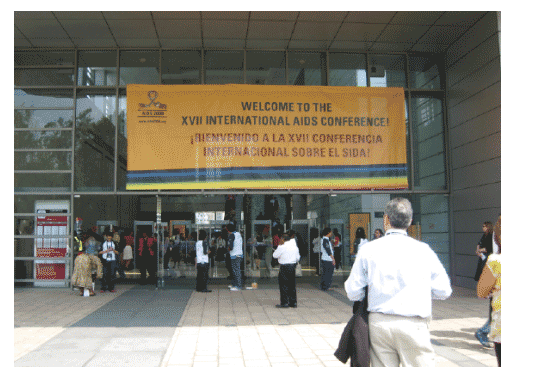
See tables and graphs from presentation below.
There was controversy and quite a bit of attention surrounding the results presented from ACTG 5202. The design was unusual. The study is large and the results presented were from the patient group with >100,000 c/ml viral load at baseline. The DSMB requested this part of the study be disontinued because there excess viral failures in the abacavir/3TC arm compared to the tenofovir/FTC arm and the difference was highly significant. The arm containing patients with <100,000 c/ml viral load at baseline continues blinded. An ITT analysis (slide included below) was presented showing at week 96 the viral response rates were similar between the ABC & TDF arms but this was because patients who switched off of abacavir earlier in study were not considered failures.
XVII International AIDS Conference
August 3-8, 2008
Mexico City
Mark Mascolini
Among people starting their first antiretroviral combination with a viral load topping 100,000 copies, those taking a regimen containing abacavir/lamivudine (ABC/3TC) had a significantly shorter time to virologic failure and to grade 3 or 4 side effects than people taking tenofovir/emtricitabine (TDF/FTC) in AIDS Clinical Trials Group (ACTG) study 5202 [1]. But a separate analysis of people taking ABC/3TC in six earlier trials found no virologic response or toxicity difference based on pretreatment viral load [2].
ACTG 5202 investigators enrolled 1858 previously untreated people, 797 with a viral load at or above 100,000 copies/mL. Participants started ABC/3TC or TDF/FTC with either efavirenz or atazanavir/ritonavir. Neither patients nor researchers knew which nucleosides were used, but everyone knew whether people were taking efavirenz or atazanavir/ritonavir.
Among the 797 people with a starting viral load above 100,000 copies, 85% were men, 26% black, and 25% Hispanic. CD4 counts before treatment averaged 181. These pretreatment factors were closely balanced between the two nucleoside-backbone groups. After a median follow-up of 60 weeks, an independent Data and Safety Monitoring Board saw a significant virologic response difference between the nucleoside arms and recommended ending that part of the study and analyzing those results.
Defining virologic failure as a confirmed viral load above 1000 copies between study weeks 16 to 24 and above 200 copies after week 24, the ACTG team found that time to failure was more than twice as fast with ABC/3TC than with TDF/FTC in people beginning therapy with more than 100,000 HIV RNA copies (hazard ratio [HR] 2.33, 95% confidence interval [CI] 1.46 to 3.72, P = 0.0003, intent-to-treat analysis with regimen changes included). An analysis that looked at time to virologic failure or to nucleoside changes figured 1.87 times higher risk of failure with ABC/3TC (95% CI 1.38 to 2.54, P < 0.0001).
Time to a grade 3 or 4 side effects proved almost twice as fast with ABC/3TC as with TDF/FTC (HR 1.89, 95% CI 1.43 to 2.50), a highly significant difference (P < 0.0001). But suspected hypersensitivity reactions--reported in 7% of each nucleoside group--did not explain this difference. Instead, the ABC/3TC group suffered significantly more body aches and lipid abnormalities, though principal investigator Paul Sax said these lipid differences were small and probably not clinically meaningful.
When GlaxoSmithKline learned earlier this year about their drugs' poor showing in the ACTG trial, the company dug into data from six earlier clinical trials involving ABC/3TC to see if antiretroviral-naive people who started the combo with a viral load above 100,000 copies did worse than people with a lower pretreatment load [2]. They also performed a 96-week analysis of the HEAT trial, which directly compared ABC/3TC with TDF/FTC.
The GSK team used the same virologic efficacy definition as the ACTG investigators, comparing above-100,000-copy and below-100,000-copy groups with Kaplan-Meier analysis to chart responses through 48 weeks of treatment. The Glaxo team also compared grade 3 or 4 side effects in the two viral load strata. The six trials--CNA30024, CNA30021, ESS30009, SHARE, KLEAN, and HEAT--combined ABC/3TC with efavirenz, atazanavir/ritonavir, lopinavir/ritonavir, or fosamprenavir/ritonavir.
Through study week 48, 87% to 95% of 2940 people taking ABC/3TC with efavirenz or a boosted PI avoided virologic failure--with very little difference according to pretreatment viral load. Safety analyses of the six trials also failed to spot any difference in people starting treatment with a high versus a low viral load.
Only one of these trials, HEAT [3], compared ABC/3TC with TDF/FTC, and this study showed no virologic or safety differences between the two nucleoside groups in either the above-100,000 or below-100,000 subgroups. As in ACTG 5202, however, more people taking ABC/3TC than TDF/FTC ended up with abnormal lipids. Everyone in HEAT took ABC/3TC or TDF/FTC with lopinavir/ritonavir, and the nucleoside analysis was placebo-controlled. The 96-week HEAT analysis presented at the International AIDS Conference confirmed the 48-week conclusion that ABC/3TC is not inferior to TDF/3TC [2].
Why do ACTG 5202 response and safety results diverge from those in other trials of ABC/3TC? So far possible answers to that question remain speculative. GSK's Keith Pappa, who presented the results, noted that the ACTG has yet to analyze data in several areas that may point to an answer, such as pretreatment resistance, treatment interruptions, adherence, and stratification by viral loads done by local labs instead of a central lab.
The ACTG's Paul Sax observed that the 5202 involved more people than HEAT, 1858 versus 688, including 797 versus 296 with a viral load atop 100,000 copies. Subtler between-group differences are more likely to emerge in bigger studies. A different third drug (atazanavir/ritonavir or efavirenz in 5202 versus once-daily lopinavir/ritonavir capsules in HEAT) may have an impact. The ACTG has yet to scrutinize results according in a third-drug breakdown.
Another ACTG investigator, Roy Gulick, wondered if gender and ethnicity of the study populations could make a difference. More than half of ACTG 5202 participants were African American or Hispanic, and 15% were women. Pappa did not have demographic breakdowns for the trials he analyzed, but a look at an early 2008 report on HEAT [3] shows a similar gender and ethnic breakdown for that trial. In the six-study comparison, noted clinical investigator Joseph Eron, response to ABC/3TC was usually slightly better in people with a viral load under 100,000 copies. Perhaps a combined analysis of those populations, he suggested, would shed more light.
References
1. Sax P, Tierney C, Collier A, et al. ACTG 5202: shorter time to virologic failure with ABC/3TC than TDF/FTC in treatment-naive subjects with HIV RNA >100,000. XVII International AIDS Conference. August 3-8, 2008. Mexico City. Abstract THAB0303.
2. Pappa K, Hernandez J, Ha B, et al. ABC/3TC shows robust virologic responses in ART-naive patients for baseline (BL) viral loads of >100,000c/mL and <100,000c/mL by endpoint used in ACTG5202. XVII International AIDS Conference. August 3-8, 2008. Mexico City. Abstract THAB0304.
3. Smith K, Fine D, Patel P, et al. Efficacy and safety of abacavir/lamivudine compared to tenofovir/emtricitabine in combination with once-daily lopinavir/ritonavir) through 48 weeks in the HEAT study. 15th Conference on Retroviruses and Opportunistic Infections. February 3-6, 2008. Boston. Abstract 774 (http://www.retroconference.org/2008/PDFs/774.pdf).
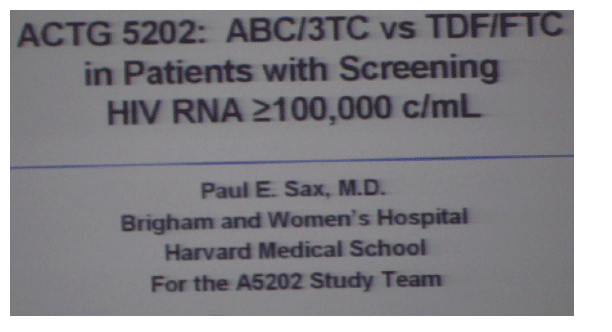
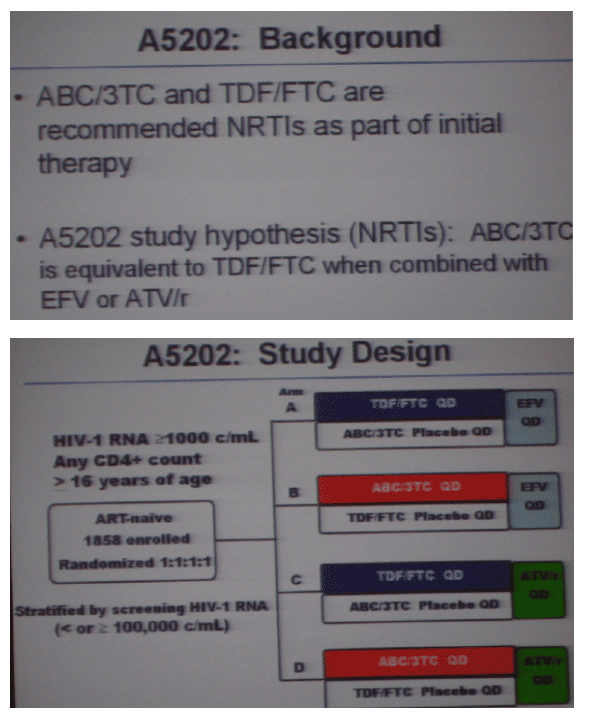
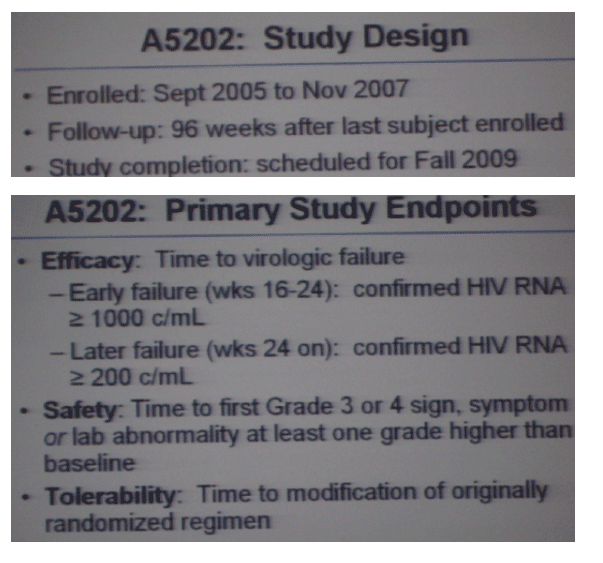
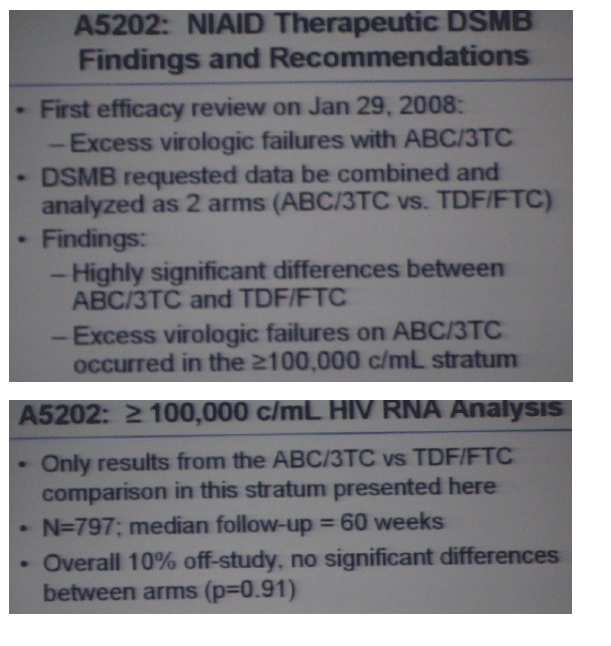
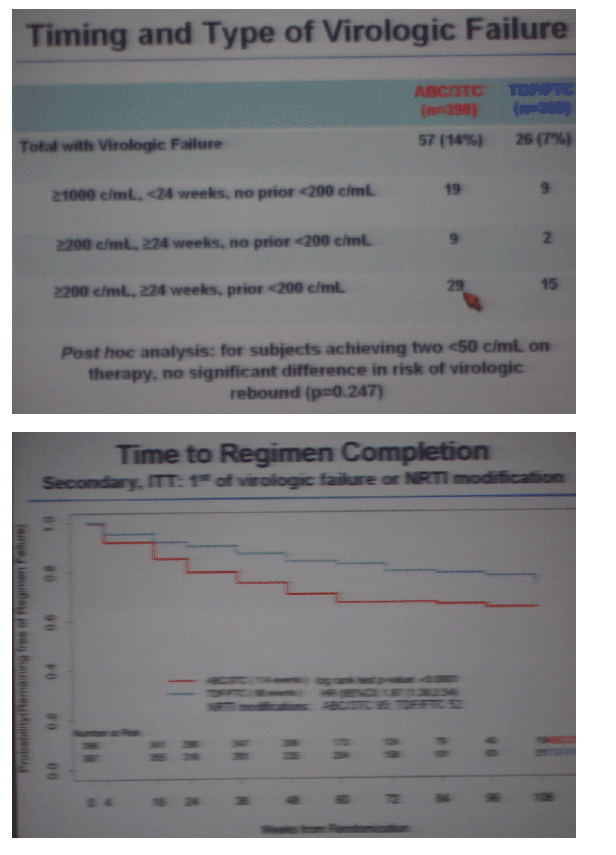
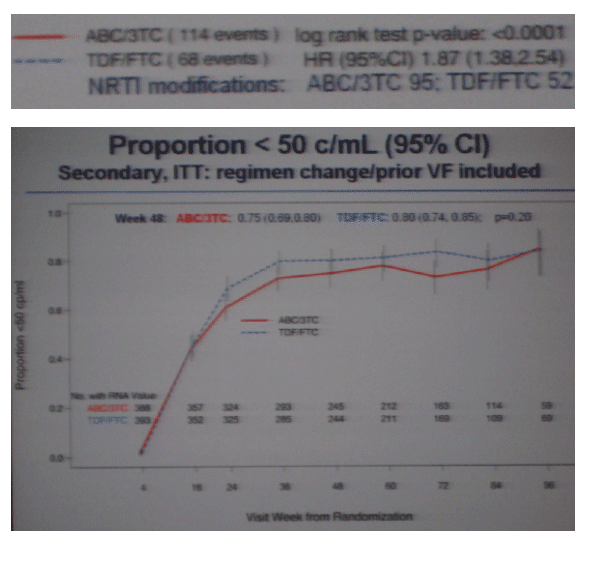
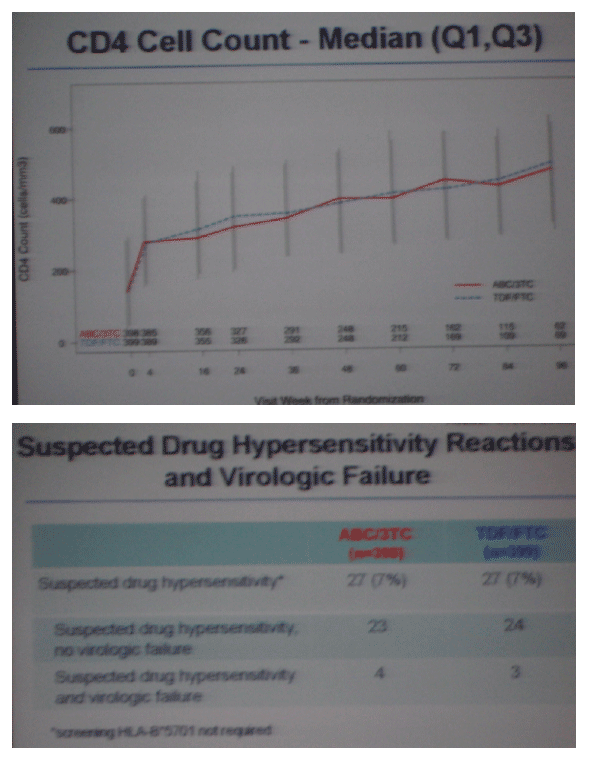
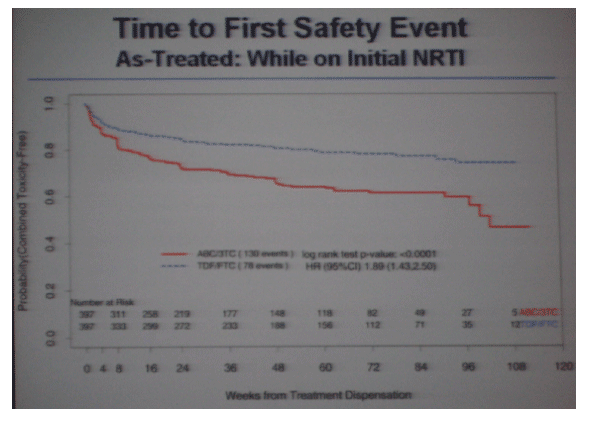
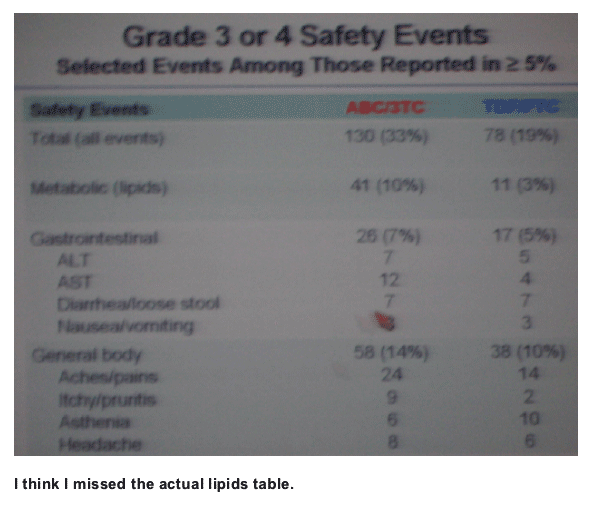
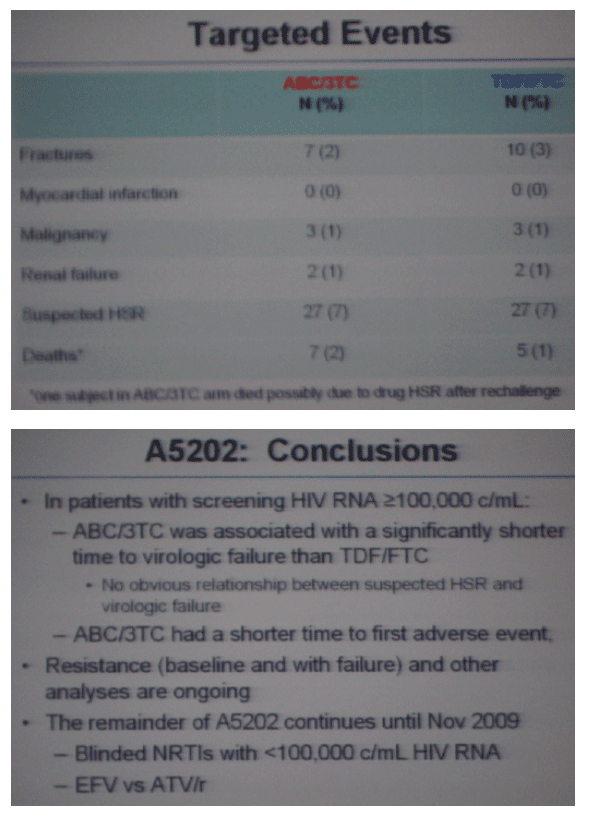
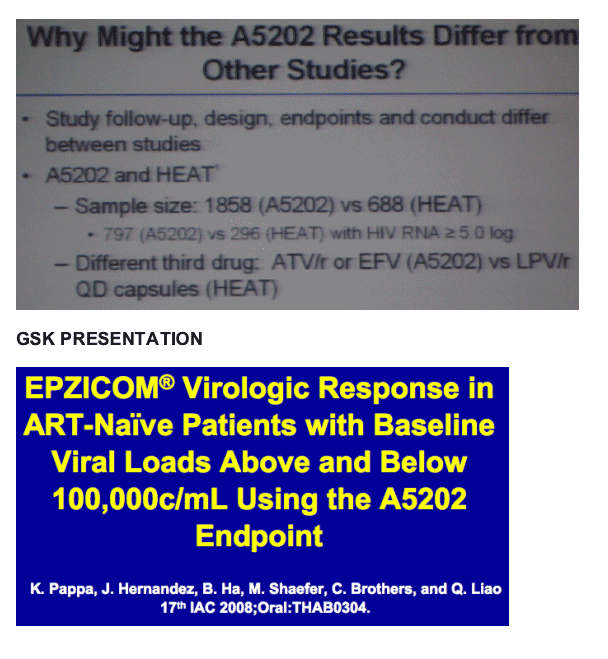
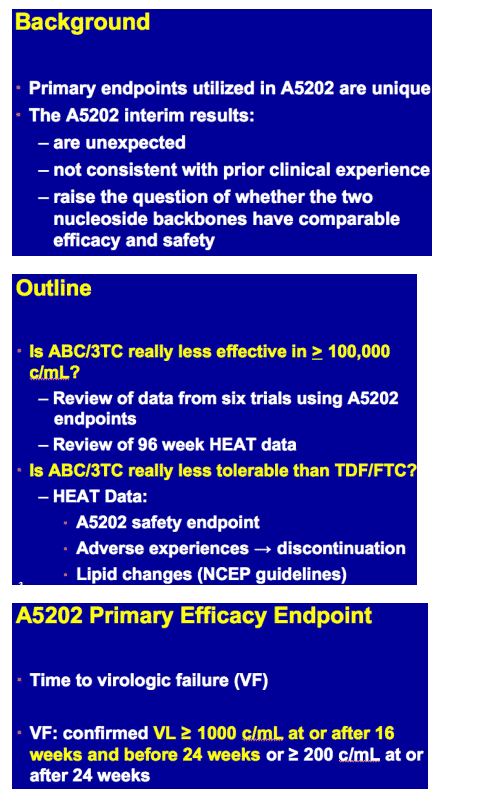
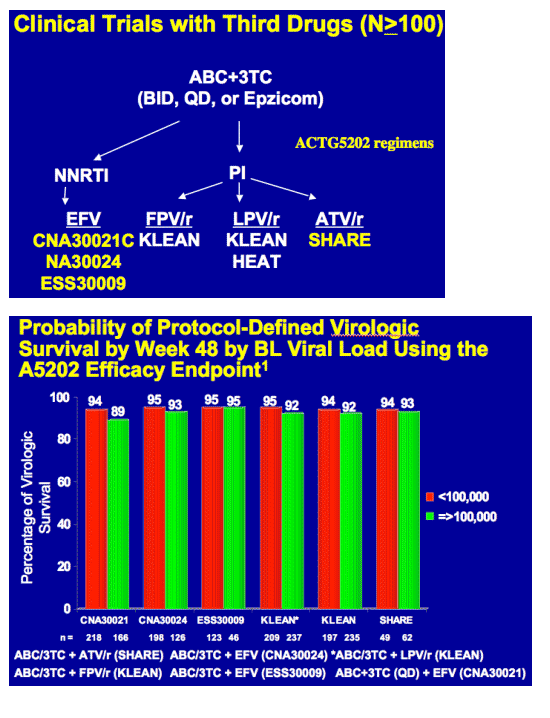
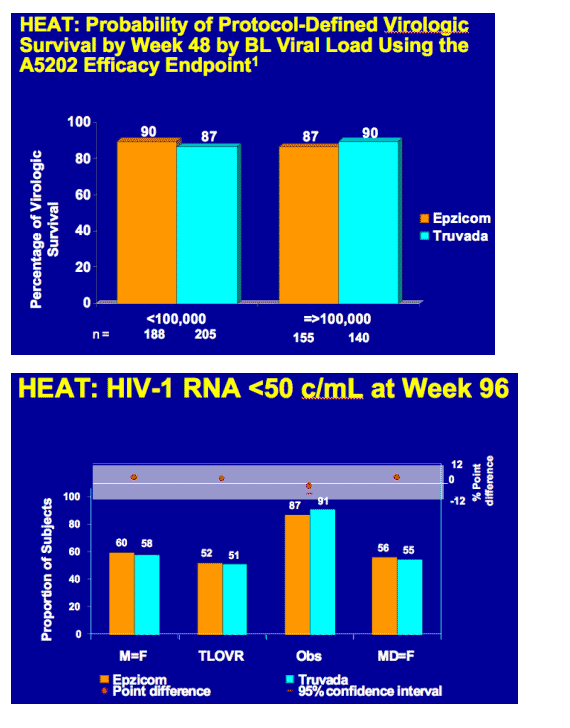
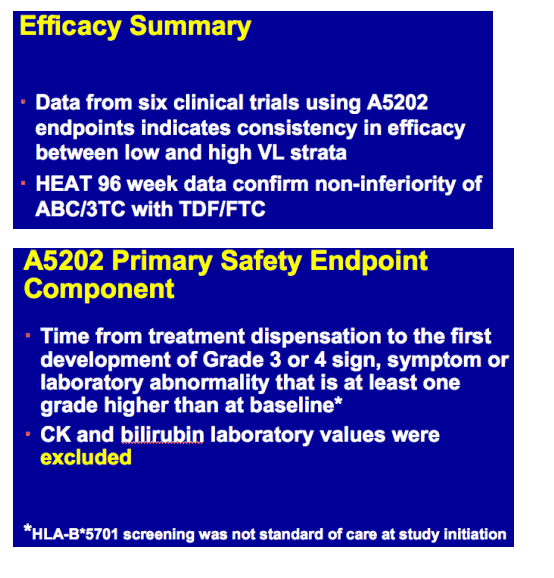
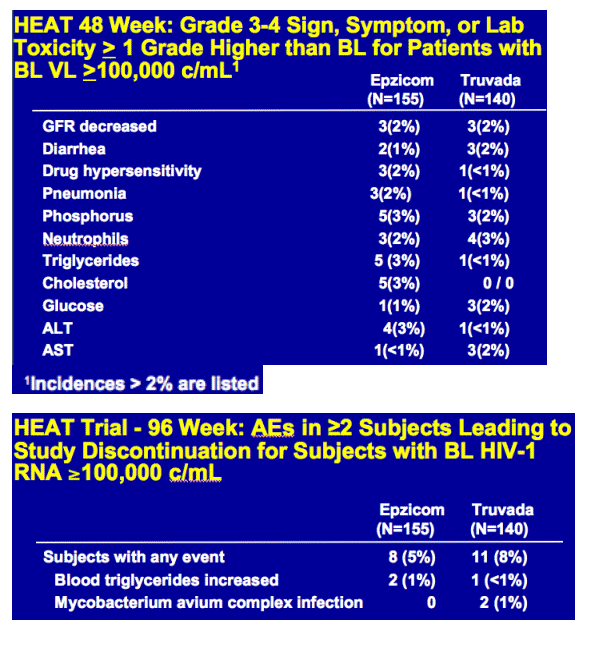
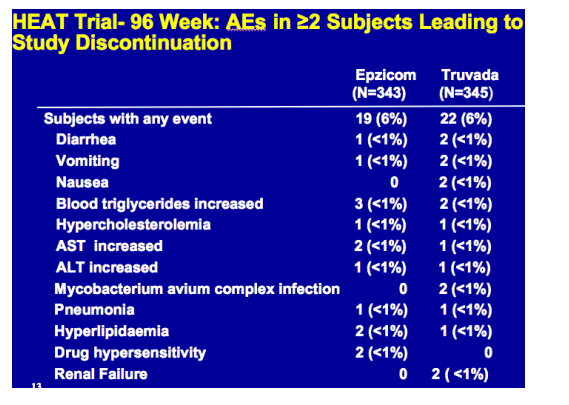
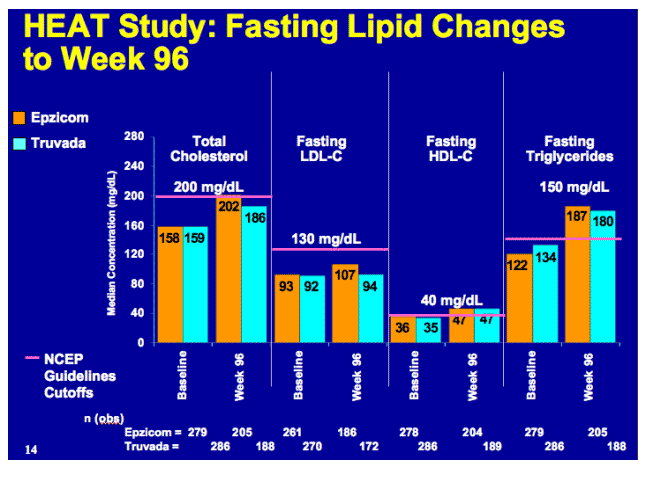
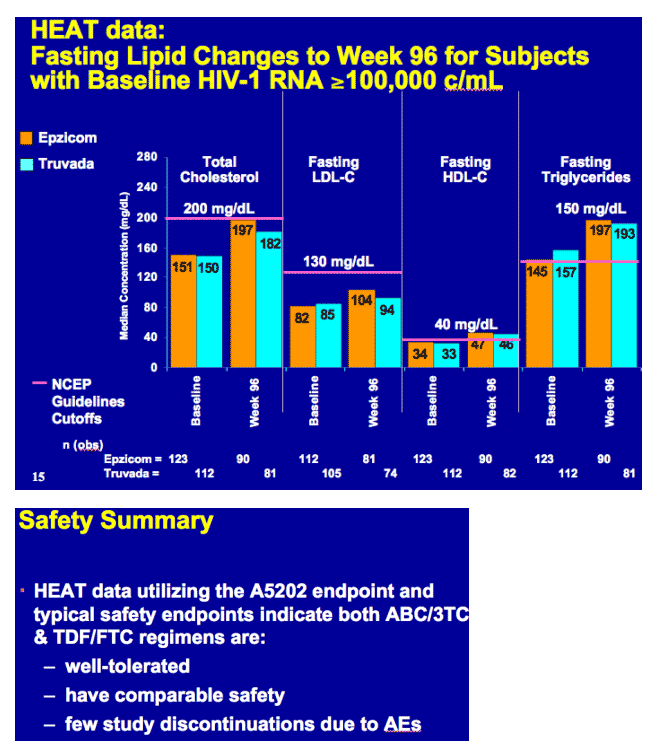
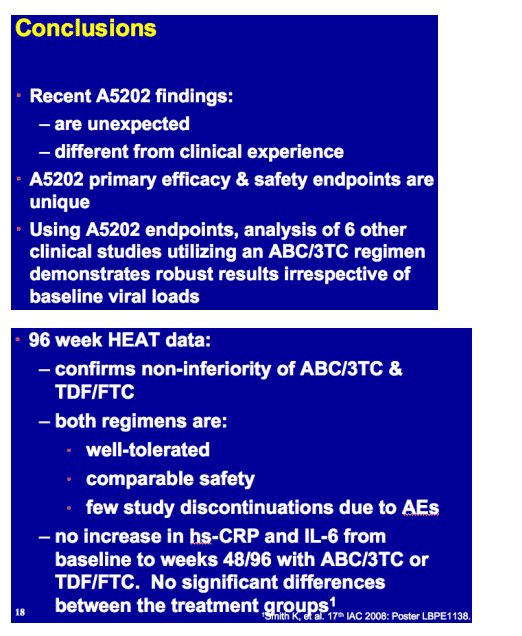
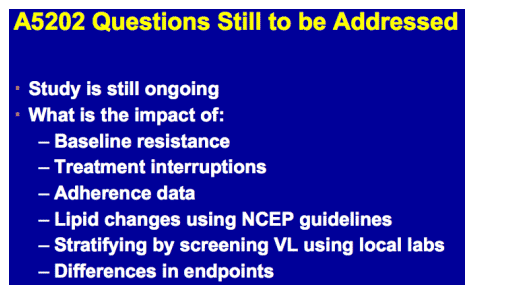
|
| |
|
 |
 |
|
|